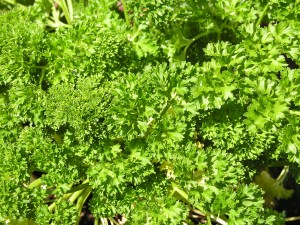Parsley is one of the most familiar cooking herbs, and it has been used for thousands of years. Parsley is a native to the Mediterranean but is cultivated around Europe, the U.S. and Asia.
Parsley Home Remedies
In ancient Greece, a crown of parsley was placed on the heads of winning athletes. The Greeks also knew parsley (Petroselinum crispum) as a healing herb, and it was apparently even fed to army horses. The Romans used to make crowns of parsley for guests in their parties, as parsley was believed to prevent drunkenness and to prevent strong and bad smells. According to Patricia Davis in Aromatherapy, an A-Z (Random House, UK, 2004), Greek and Roman physicians recommended parsley seeds for kidney and bladder disorders, and as an emmenagogue (to bring on a delayed period).
Different Types of Parsley
Of the different varieties of parsley, the most commonly used are curly leaf parsley and flat leaf parsley. Root parsley is a less common type, used mainly in central and eastern European cuisine, and as the name suggests, it grows a large root that looks a bit like parsnip.
Cooking with Parsley
Parsley is a source of vitamins A, B, and C, and of iron, calcium and magnesium. Parsley is added to many soups and stews, and it is one of the typical ingredients in bouquet garni. Parsley goes well together with fish, meat, vegetable dishes and eggs, it can be added to salads, and it can be used to garnish almost anything. Both the leaves and the roots may be used, and the roots are very aromatic and full of flavor. If you come across root parsley, grate it for salads or eat cooked, like other root vegetables. Fresh parsley leaves can be stored by freezing or by drying.
More Uses for Parsley:
Sources:
Lesley Bremness: The Complete Book of Herbs (Studio, 1994)
Patricia Davis: Aromatherapy, an A-Z (Random House, UK, 2004)
Photo: Noebse (Wikimedia Commons)





